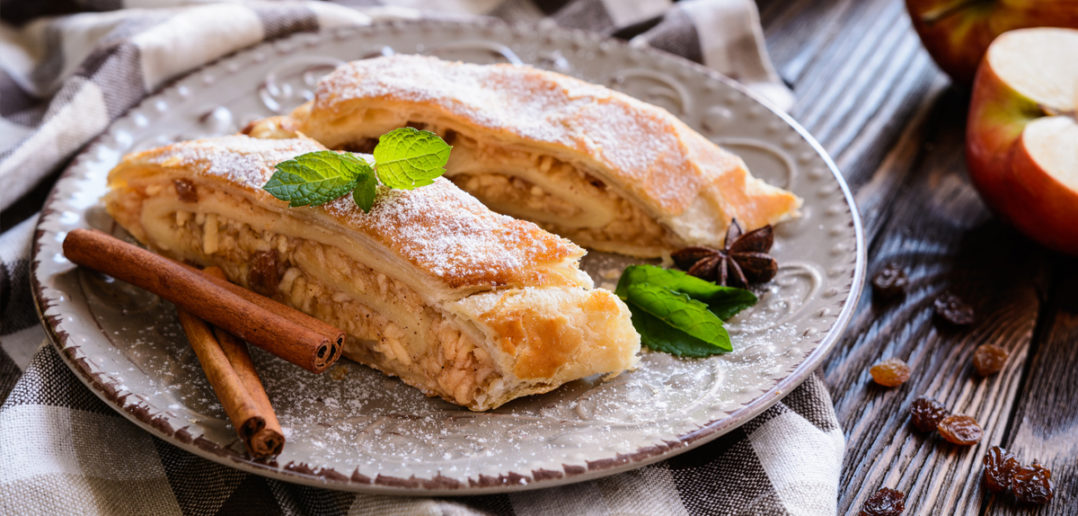With only two days to go we want to let you into a little secret… This MAPIC we are launching our brand new JLL City Bites report! This guide, to ten of the hottest food destinations in Europe, will give you a taste of our expert insight and enlighten you with some of the most interesting, different and random facts about these cities. So what could you find out from City Bites, you may ask? Well, topics include how much people spend on eating out to where the tallest, smallest and weirdest restaurants are. Ever wondered how much cheese Parisians eat? How many types of beer Germany produces? All will be revealed at MAPIC.
In the meantime, to get your appetite cravings started, here is a potted history of five cities and the recipes they made famous…
- Frankfurt is the home of the original frankfurter, according to popular history. Frankfurter Würstchen were served in imperial coronation ceremonies as early as the 13th century. However, some claim that the modern version – known as a “dachshund” or “little-dog” sausage – was created in the late 1700’s by a German butcher, living in Coburg, who added beef and simply called it “Frankfurter”. A century later, German immigrants brought the sausages to America where they were served in rolls and gained the name “hot dog”. Some say “hot dog” originated from the New York Polo Grounds where hawkers cook the sausages in portable hot water stations, shouting “Get your dachshund sausages while they’re red hot!”
- Vienna is home to the strudel, which in Middle High German literally means “whirlpool”. The oldest strudel recipes are from 1696 in a handwritten cookbook at the Vienna City Library. The pastry is thought to have been developed from more ancient Eastern pastries such as Baklava.
- The oldest reference to “Gaufres de Bruxelles” (Brussels Waffles) is from 1842, although they are thought to have existed long before. They first found international fame at the 1958 Expo in Brussels and were introduced to America just four years later. Since many Americans were unaware that Brussels was the capital of Belgium, they were renamed Belgian Waffles.
- Piri piri sauce is named after an African bird’s eye chili, and stems from Portugal’s colonial history. For over a century, Lisbon remained the most important Western capital in the spice trade, over which time, early settlers started to bring sauces and recipes back home. Chicken piripiri was the most popular of these, which spread all over the Portuguese empire to South Africa, where it was discovered by Nando’s founders and immortalised forever.
- Panettone is Italy’s best-selling Christmas sweet, and began its story in Milan. Legend has it that in the 15th century, the Duke of Milan’s cook was preparing an important feast, and left the dessert in the oven, burning it in the process. Thankfully the kitchen boy, Toni, had made himself a simple cake that morning using flour, butter, eggs, lime zest, and raisins. Since he had no other options, the cook served it. Much to the cook’s surprise, it was a hit with the party. In gratitude, he named it, “Le’ pan’ de Toni”, which later evolved to its current name. The bread as we know if, was developed by Angelo Motta in 1919, who created the tall domed shape by making the dough rise three times before cooking, giving it its famously fluffy texture.
Be sure to come and visit us at MAPIC on stand R7 L15, and grab your copy of City Bites.
Top photo © NoirChocolate/GettyImages



![[NEW] MAPIC interview: In conversation with Tobias Karlsson, Global Real Estate Director, KIKO Milano](https://www.beyondretailindustry.com/wp-content/uploads/2024/05/MicrosoftTeams-image-44-5-351x185.jpg)
![[NEW] MAPIC interview: In conversation with Giovanni Porcu, CEO and founder of Doppio Malto](https://www.beyondretailindustry.com/wp-content/uploads/2024/03/DM-Magenta_1-351x185.jpeg)